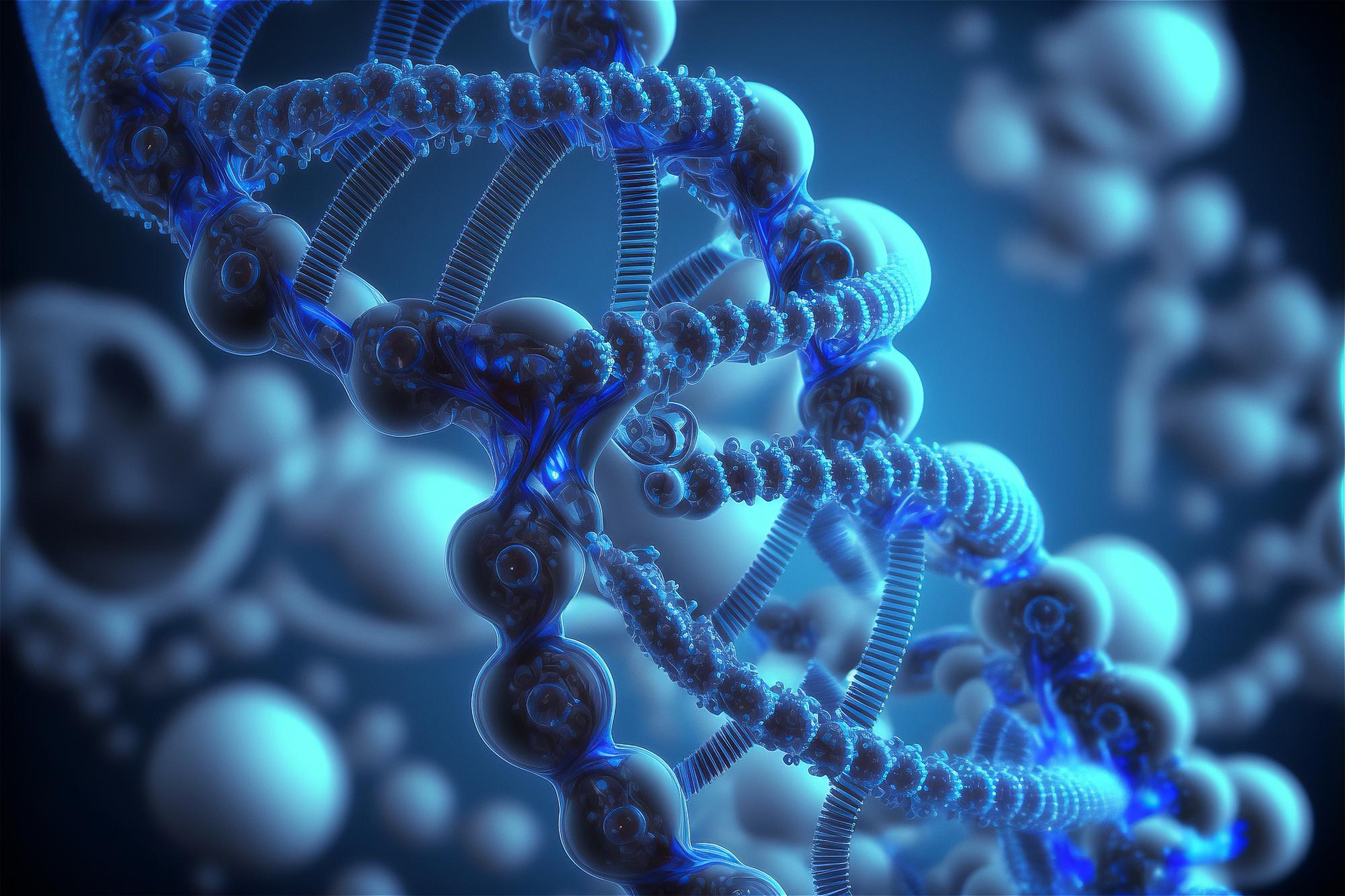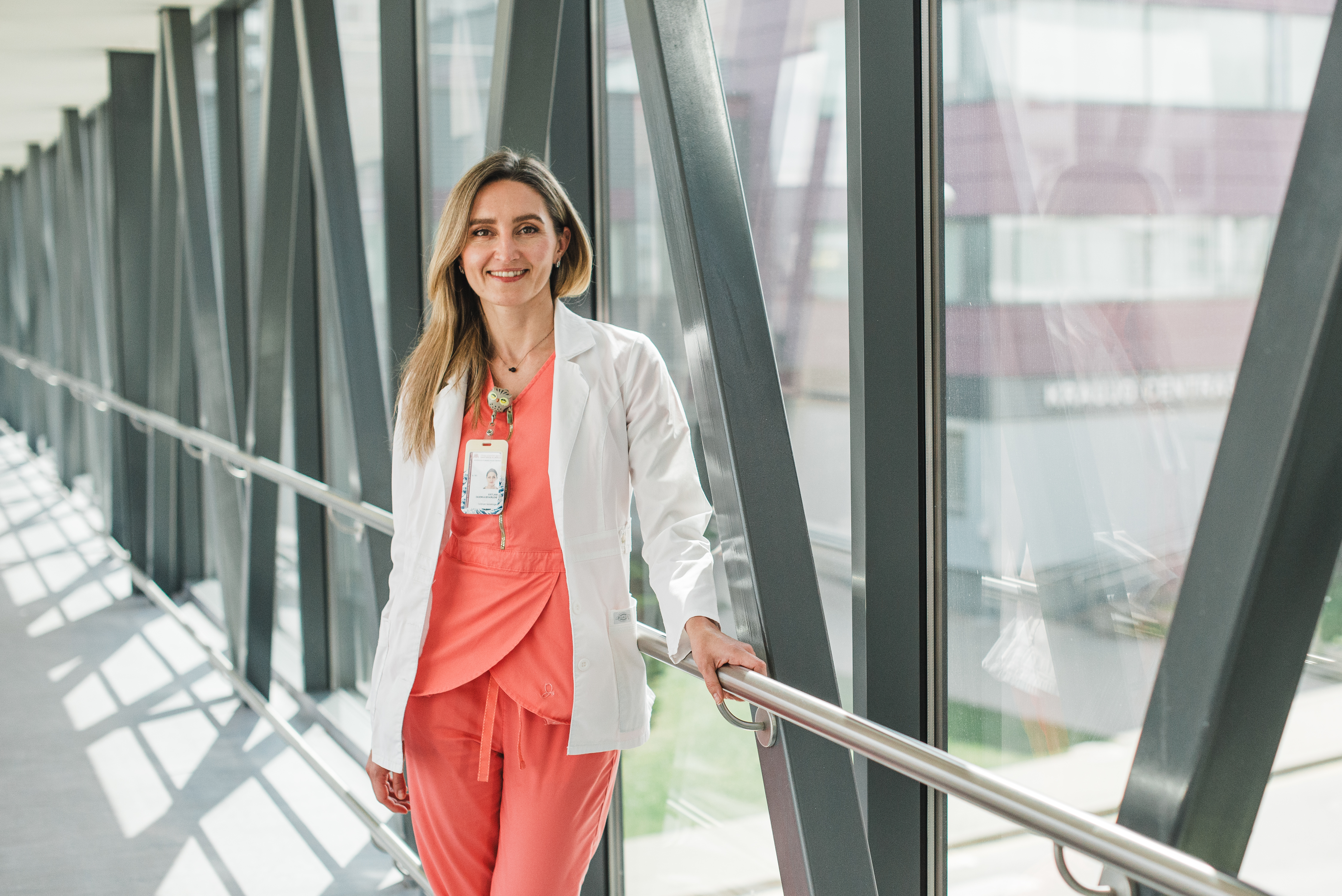Neonatologist Svetlana Dauengauer-Kirlienė: Usually People Are Unaware That They Have Different Genomes

For more than a century, scientists have been trying to understand as to why a pregnant mother’s body does not reject the foetus as a foreign body. In the meantime, psychologists have been metaphorically reflecting on the special connection between mother and child. “As a mum of three, I think that the fact that I am harbouring a small part of my children inside me is very exciting and meaningful,” says Svetlana Dauengauer-Kirlienė, a neonatologist at Santaros Klinikos and doctoral student at the Faculty of Medicine, at Vilnius University. She agreed to explain to us the microchimerism phenomenon that is still little-known to the general public but is receiving increasing attention, not just from geneticists or neonatologists, but also from doctors and researchers in other disciplines.
What is chimerism and what does the ‘micro’ in microchimerism, refer to?
Perhaps one should begin with an explanation of the notion of a chimera: in Greek mythology, a chimera refers to a creature that is a combination of several animals. Generally, it is depicted as a lion with a goat’s torso that has a snake for a tail. In genetics, the situation is very similar: a chimera is treated as an organism comprised from cells of more than two different genomes. This occurs when several zygotes fuse at the earliest stage of foetal development, i.e. immediately after conception. Put simply, there should have been two organisms, but due to certain conditions, the two zygotes that could have developed into separate organisms, fused instead and became the cells of a single organism. Hence, after this organism developed and was born, some of its cells had their own genome, whereas some of the other cells and tissues, had a different genome. Mostly people do not even know that they have different genomes inside them; however, there are some indirect attributes that might signal this, for example, pigment spots on the body, a strand of hair of different colour, being left-handed or ambidextrous.
Meanwhile, microchimerism refers to the presence of non-host genetic matter in a human body. It can take two forms: natural and artificial. The most prevalent instances of natural microchimerism include those between a mother and a child or between twins. Why ‘micro’? Because the quantity of non-host genome is quite small. Instances of artificial microchimerism would include cases when, for example, an individual receives an organ or tissue transplant or a transfusion of blood components. Natural microchimerism occurs in pregnancy, when a mother’s cells travel to the foetus through the placenta, and likewise, the cells of the foetus enter the mother’s body. In the case of twins, when blood circulation and a single placenta are shared, some of the blood corpuscles might enter the other twin. As a result, non-host cells with non-host DNA will take up residence.
When, how and by whom microchimerism was discovered?
Historically, the origin of our understanding goes back to the 1960s, when fluorescence diagnosis appeared, i.e. the fluorescent microscope and marking process. The first proof of existence of the microchimerism phenomenon was discovered during research: pregnant women were injected with erythrocytes as markers and later these were observed in the umbilical cord blood of the new-borns. American researchers studying karyotypes noticed that chromosomes of an entirely different type might form in the blood of women after giving birth (specifically, male chromosomes were detected in women in the study who had given birth to male babies). This discovery showed that cells penetrate through the placenta, although earlier, it had been believed, that the placenta contained a barrier to prevent such things from passing through it.

Is microchimerism always a “two-way” phenomenon, i.e. a mother’s cells enter the child’s body and vice versa?
Foetal microchimerism, when foetal cells enter the mother’s blood circulation, takes place in almost 100% of cases. It is believed that mothers always harbour the blood cells of their foetus. However, reverse microchimerism, when a mother’s cells enter the foetus, does not occur often. There are certain predisposing factors making it harder for the cells to gain entry into the foetus. These include, previous microtraumas, abortions, miscarriages, or even Caesarean section operations.
Is there a specific period during a woman’s pregnancy when microchimerism occurs? Why this period in particular?
Microchimerism occurs in early pregnancy, approximately in the fourth week. At that time, the placenta and its blood vessels are in the development stage. Early pregnancy facilitates the transfer of cells: the immune system of the foetus is still developing and does not recognise foreign bodies easily, tending to accept, rather than reject them.
How long are the child’s cells present in the mother’s body, and the mother’s cells in the child’s body?
In the case of foetal microchimerism, cells might survive as long as three decades. With every pregnancy, cells of another foetus are added. That is why a mother can be referred to as a ‘chimera’. However, a mother’s cells in a child’s body are hosted for a slightly shorter period, approximately until adulthood – 18–19 years. Cells that have transferred, function as stem cells: by transforming themselves, they can travel to certain organs and tissues and function as part of them. Most often, such cells transform themselves into hepatic, pancreatic or thyroid cells as well as into any type of blood cells: myeloid, lymphoid, etc. Such cells are discovered in blood most frequently and this constitutes the basis for the early diagnosis of abnormalities.
What is the correlation between microchimerism and autoimmune conditions? Overall, is microchimerism more beneficial or harmful to a human body? Could its actual function be defined somehow?
The correlation is quite substantial: non-host protein gaining entrance to a mother’s body could cause autoimmune diseases; hence, microchimerism is of particular interest to immunologists. Generally, microchimerism explains why women get ill with autoimmune diseases three times more often than men; their manifestation coincides with pregnancies (autoimmune conditions become more acute during or immediately after pregnancy). Regarding the detrimental effect, for example, correlations with rheumatoid arthritis, and autoimmune thyroid diseases were observed as well as a higher risk of multiple sclerosis. On the other hand, microchimerism is linked with positive aspects too: foetal cells harboured in the mother’s body are pluripotent and can transform themselves into the cells of any other tissue. This might help fight oncological conditions or simply help wounds to heal. For example, after a Caesarean section, healing in particular, improves, due to this phenomenon. Microchimerism may also help in the case of a graft versus the host, since tolerance of antigens develops and the organ or tissue is better tolerated. A positive connection was also observed in the case of haemophilia, when transfusions of artificial factors had to be made: recipients with manifestations of maternal microchimerism are found to tolerate the transfusion therapy better than those without them. Today, we are already aware that microchimerism helps reduce the risk of ovarian cancer.
It is likely that the function of microchimerism, is to protect the foetus. The foetus is an alien organism and it has to be tolerated; the pregnancy needs to continue to term and the child should be allowed to be born rather than rejected as alien. Everything else manifests as a disorder of the microchimerism function, for instance, preeclampsia, which can be caused by foetal microchimerism and then, unfortunately, pregnancy has to be terminated.